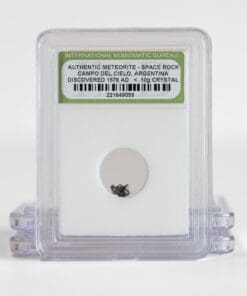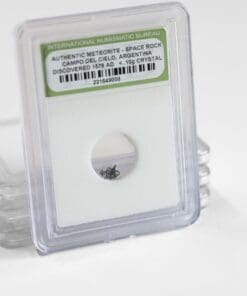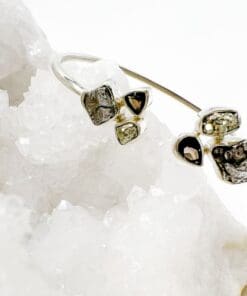The Campo del Cielo Meteorite: Ultimate Guide
The Campo del Cielo meteorite is a unique and fascinating piece of space rock that has captured the imagination of scientists and collectors alike. This meteorite field is located in the Chaco province of Argentina, and it is believed to be one of the largest meteorite fields on Earth. The meteorites in this field are believed to have fallen about 4,000 to 6,000 years ago, and they have provided researchers with a wealth of information about the early Solar System. In this article, we will explore the history, meaning, and facts surrounding the Campo del Cielo meteorite, as well as its benefits, price per gram, and the issues surrounding authenticity.
Campo del Cielo Meteorite Benefits
One of the benefits of the Campo del Cielo meteorite is that it is a rich source of scientific information. The meteorites in this field are believed to be a part of a larger asteroid that broke apart before it hit Earth, providing researchers with a unique opportunity to study the composition and structure of an asteroid. Additionally, the age of the meteorites makes them valuable in understanding the early Solar System and the formation of the planets.
Campo del Cielo Meteorite Price per Gram
The price per gram of Campo del Cielo meteorite varies, depending on the specimen’s size, shape, and quality. Generally, it can range from $1 to $20 per gram for common specimens, but prices can go up to several hundred dollars per gram for rare, large, or well-shaped pieces.
Campo del Cielo Meteorite for Sale
The Campo del Cielo meteorite is also a popular item among collectors and enthusiasts. It can be found for sale at various online retailers, meteorite shows, and mineral shows. However, it is important to be aware that there are also many fake Campo del Cielo meteorites on the market. To ensure authenticity, buyers should purchase from reputable dealers and look for the proper documentation, such as a certificate of authenticity.
Campo del Cielo Meteorite Age
The age of the Campo del Cielo meteorite is estimated to be around 4,000 to 6,000 years old, which is relatively young in terms of meteorites. This is the reason why it is important to study its composition and structure, as it can provide insights into the early Solar System.
Campo del Cielo Meteorite History
The history of the Campo del Cielo meteorite is long and fascinating. The meteorites were first discovered by the indigenous people of the area, who used the iron from the meteorites to make tools and weapons. The field was later rediscovered by Spanish explorers in the 16th century, and it was extensively studied by researchers in the 20th century.
Campo del Cielo Meteorite Meaning
The meaning of the Campo del Cielo meteorite is multi-faceted. For scientists, it is a valuable source of information about the early Solar System. For collectors, it is a unique and interesting addition to their collection. For the area’s indigenous people, it holds spiritual and cultural significance.
For many people in the metaphysical community. Some believe that meteorites, including the Campo del Cielo meteorite, are powerful tools for spiritual growth and healing. Meteorites are believed to hold a unique energy and vibration that can be harnessed for personal transformation and spiritual development.
Some people believe that owning a piece of a meteorite, such as the Campo del Cielo meteorite, can bring positive energy and good luck into their lives. They also believe that meteorites can help to balance and align the energy centers in the body, known as chakras, and can enhance psychic abilities. Some also see it as a powerful tool for meditation and visualization, helping to connect with the higher self and the universe.
Additionally, the Campo del Cielo meteorite is believed to have a strong connection to the element of fire, which is associated with transformation and change. This makes it a powerful tool for those seeking to make positive changes in their lives, whether it be a career, relationships, or personal growth.
Campo del Cielo Meteorite Facts
- The Campo del Cielo meteorite field is located in the Chaco province of Argentina.
- The meteorites in this field are believed to have fallen about 4,000 to 6,000 years ago.
- The Campo del Cielo meteorite field is the largest meteorite field on Earth with more than 100 meteorites found there.
- The meteorites are mostly made of iron and nickel.
- The Campo del Cielo meteorite is believed to be a part of a larger asteroid that broke apart before it hit Earth.
- The meteorites were first discovered by the indigenous people of the area, who used the iron from the meteorites to make tools and weapons.
- The field was later rediscovered by Spanish explorers in the 16th century.
- The Campo del Cielo meteorites have provided researchers with a wealth of information about the early Solar System.
- The Campo del Cielo meteorite is a popular item among collectors and meteorite enthusiasts.
- The price per gram of Campo del Cielo meteorite varies, depending on the specimen’s size, shape, and quality, and can range from $1 to several hundred dollars per gram.
In conclusion, the Campo del Cielo meteorite is a unique and fascinating piece of space rock that has captured the imagination of scientists and collectors alike. Its scientific, historical, and cultural significance makes it an important and valuable piece of knowledge for the general public, and its price and rarity makes it an interesting object for collectors. It is important to be aware of the issues surrounding authenticity when purchasing a meteorite and to purchase from reputable dealers.






I have an 856 gram Campo De Cielo iron nickel meteorite, in the thumb prints on the meteorite the native peoples etched it-showing amazingly detailed scenes
That sounds absolutely fascinating! The connection between celestial objects and human history is always intriguing, and your piece seems to be a remarkable example of this. It’s incredible to think about how the native peoples interacted with such an extraordinary object, using it as a canvas to etch their experiences and stories. Do you have any insights or theories on what the scenes might represent or how they chose to depict these particular stories on the meteorite? I’d love to hear more about your artifact and any research or interpretations you’ve encountered regarding these etchings!